Wild ponies and birds on Chincoteague and Assateague Island
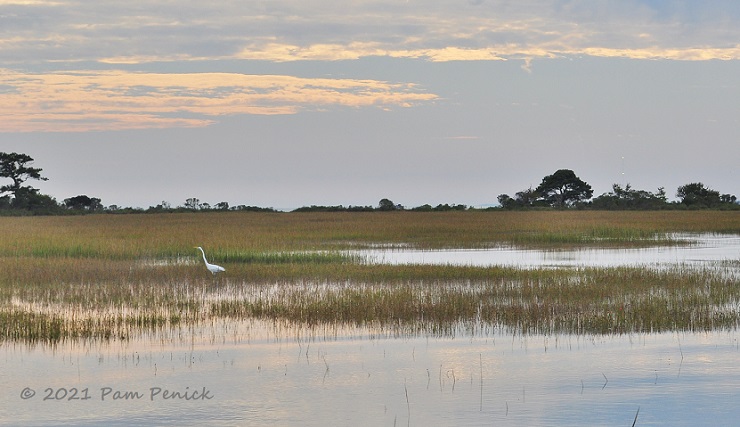
My big road trip last fall kicked off on September 30th in Portland, Maine. Eighteen days and 2,200 miles later, I cruised along Virginia’s Eastern Shore and across Chincoteague Bay to Chincoteague Island. Yes, the island made famous by the beloved 1947 children’s book Misty of Chincoteague by Marguerite Henry. Like so many fans of the book and its titular wild pony, I visited Chincoteague and its sister island, Assateague, to see the islands’ wild horses for myself.
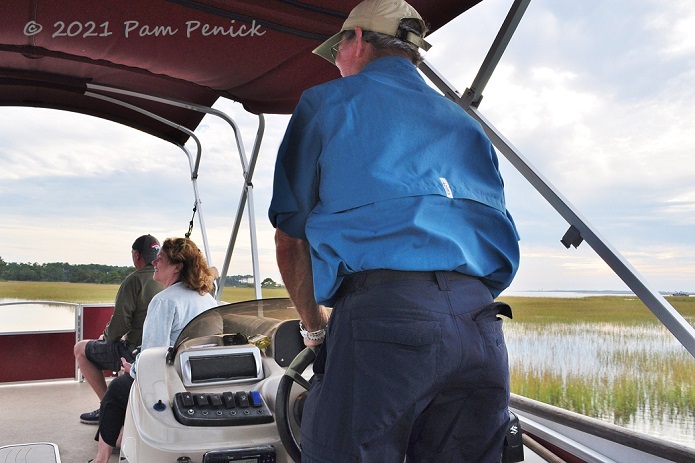
The wild ponies — around 230 of them — live on Assateague Island, an undeveloped barrier island (with a National Seashore and National Wildlife Refuge) that spans the Virginia/Maryland state line. You can drive or bike around the islands to try to spot ponies or sign up for a boat cruise with an experienced captain who knows where to look. I opted for the latter (it’s an island! You’ve got to get on the water), signing up for a 2-hour wildlife tour on a small pontoon boat with Daisey’s Island Cruises. My fellow passengers and I — six in all — plus a jovial captain who grew up on the island set off a couple of hours before sunset.
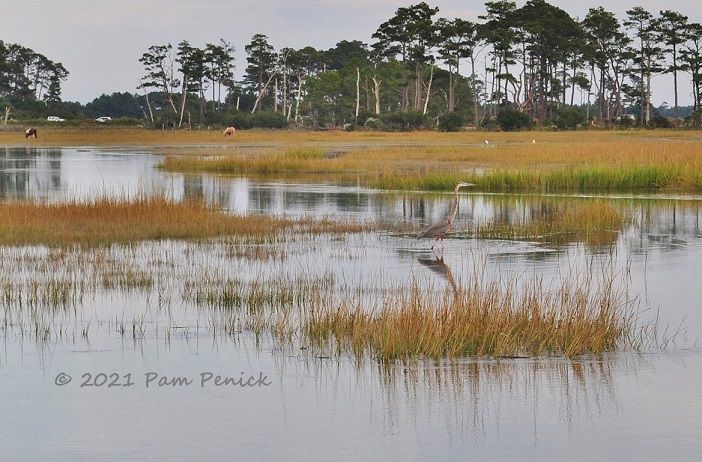
Soon we found a herd of ponies grazing at the edge of a saltwater marsh. Although the water was only a few feet deep, our captain was able to snake his way through the shallows to get us a closer view.
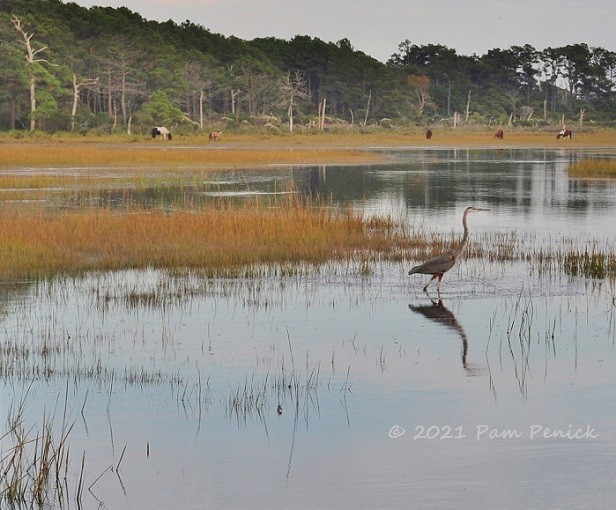
Herons and egrets and other marsh birds made for great birding, in addition to the thrill of seeing ponies.
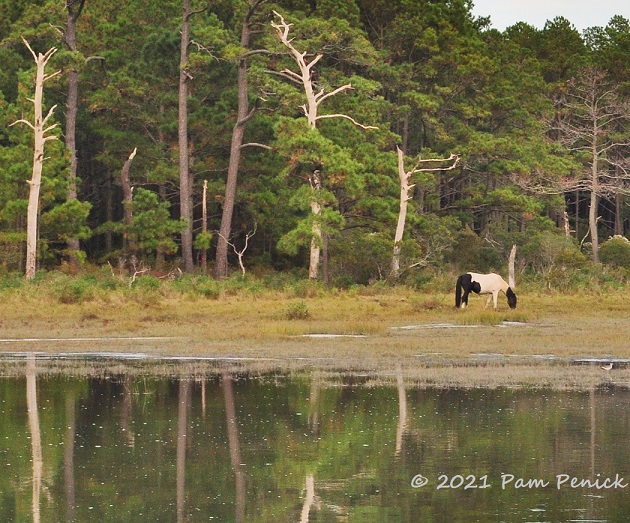
Chincoteague ponies — for so they’re called, even though today they live on undeveloped Assateague — have roamed wild on the islands for approximately 400 years. Some hold that they swam to freedom from a sinking galleon. But official sources say they descend from horses brought to the islands by 17th-century mainlanders intent on avoiding livestock taxes there. The ponies live in small bands of mares and foals protected by a stallion, or in bachelor herds.
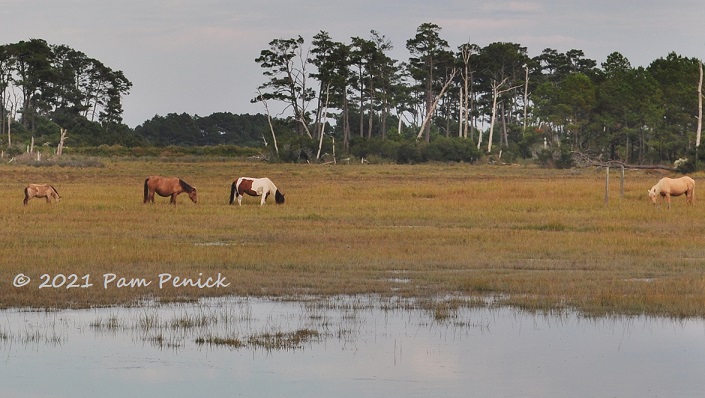
Their diet of saltwater grasses provides lean nutrients and high salt content, so they must graze continually and seek out freshwater ponds and vernal pools. Their numbers are controlled by human intervention to prevent overpopulation and inbreeding abnormalities. In Maryland, the National Park Service manages the ponies by darting selected mares with a contraceptive vaccine.
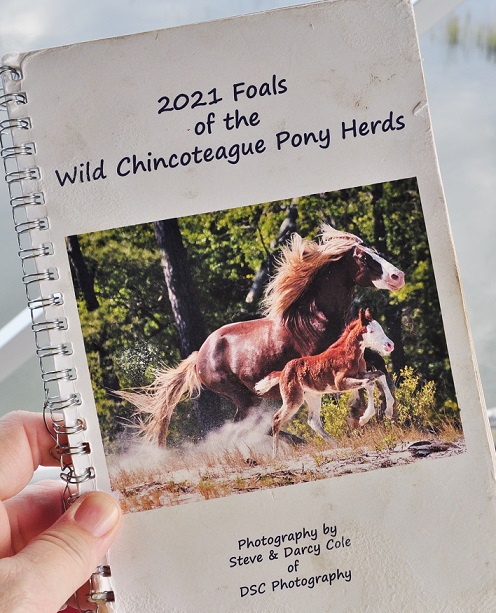
The Virginia ponies breed freely, but the Chincoteague Volunteer Fire Company, which has owned and managed the herd since the 1920s, auctions off most of the foals each July in a popular event known as the Pony Swim. Ponies are rounded up by “saltwater cowboys” and driven across the Assateague Channel to Chincoteague — a 3-minute swim — for auction. Most foals are auctioned off to private buyers. But foals designated as “buybacks” are returned to the wild, with naming rights given to the buyers who donated them.
Our captain passed around the book of foals born in 2021, which contains detailed info about each filly and colt, including parentage, markings, and identifying photos.
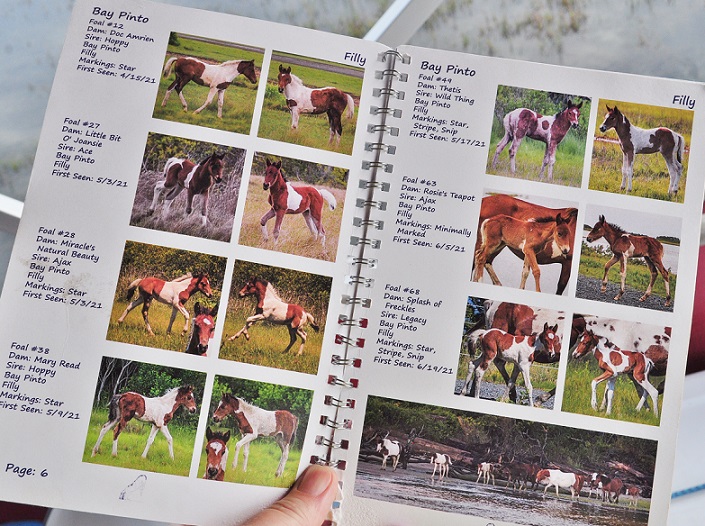
Lots of pintos!
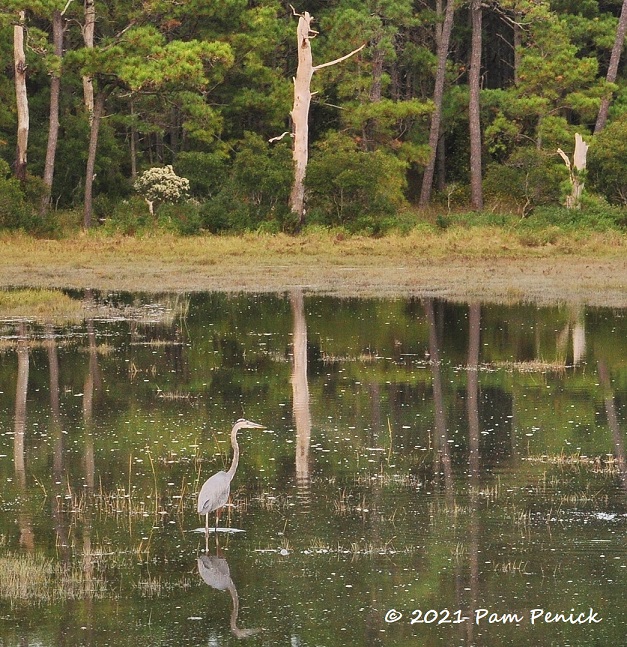
As we watched the grazing ponies, I also admired a heron stalking its prey in the shallow water.
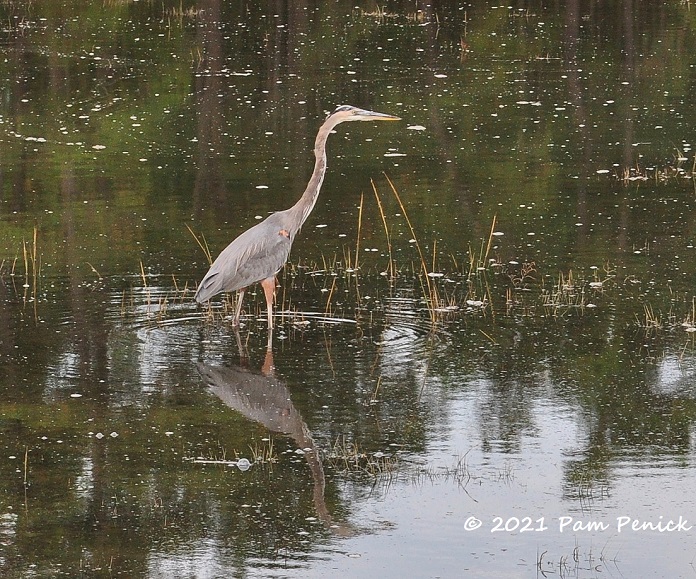
A wound or irritation on the right shoulder was visible.
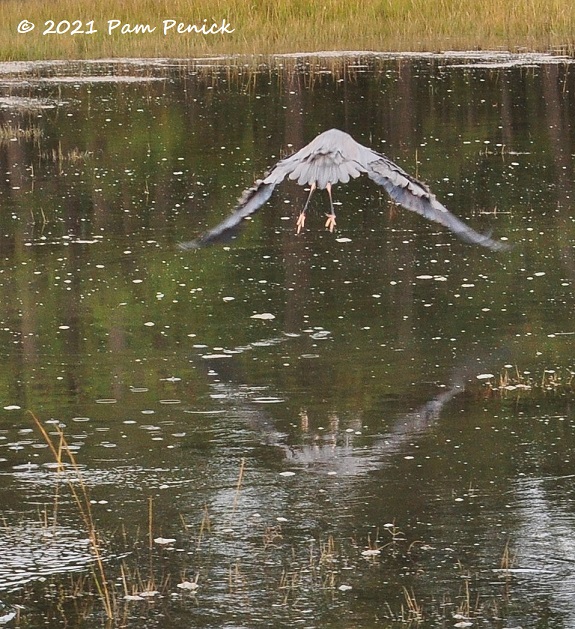
But it flew just fine.
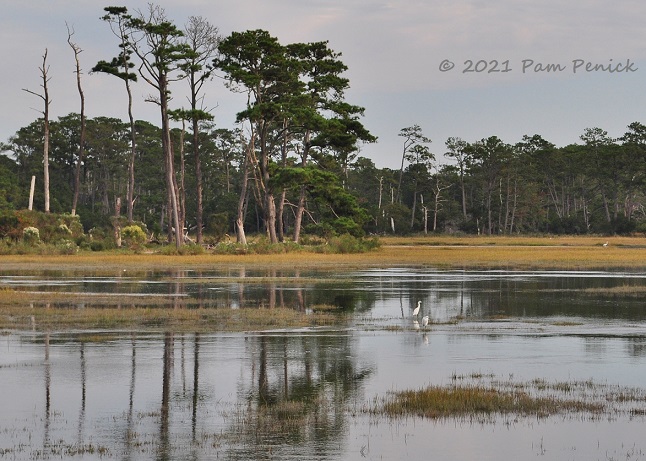
Egrets were here too.
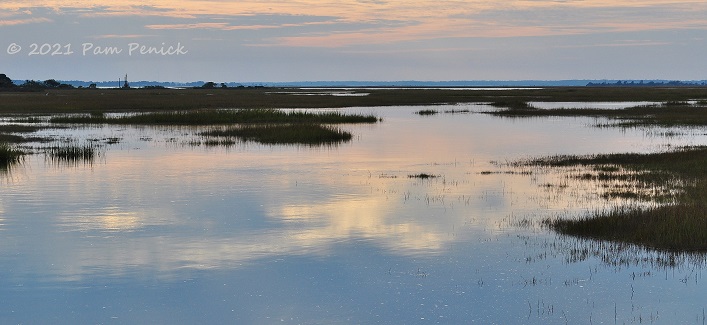
The light on the water was beautiful as the sun sank into the clouds.
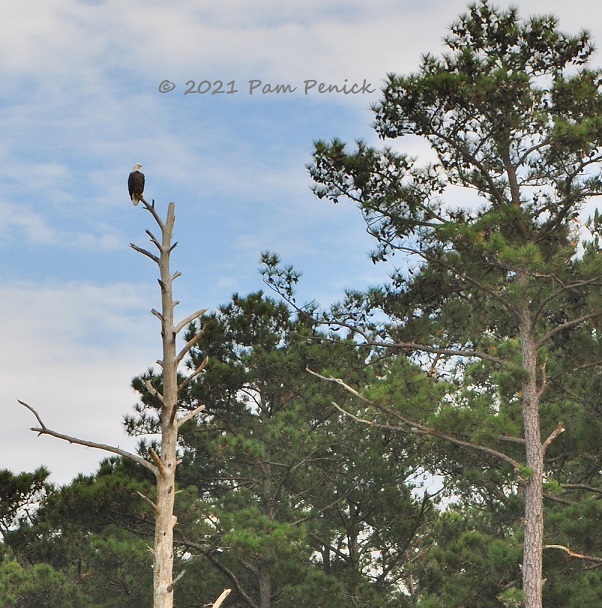
Soon we were off again, zipping along the channel between the forested islands. Someone spotted a bald eagle high in a dead tree.
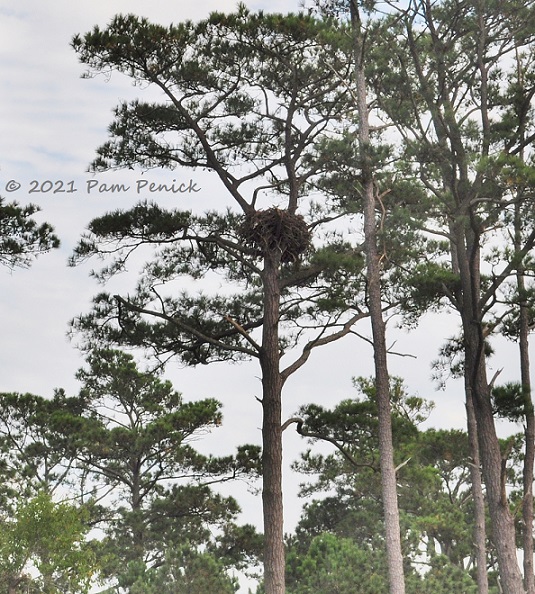
It watched over its enormous nest, high in the crotch of a tall pine.
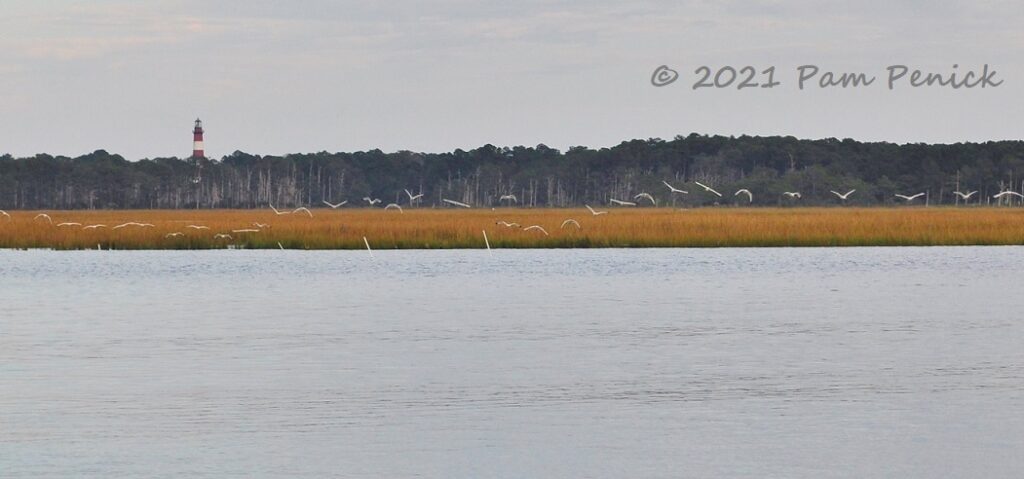
White sea birds flew low in an undulating line, like a sine wave. Ahead the red-and-white-striped Assateague Lighthouse stood head and shoulders above the trees.
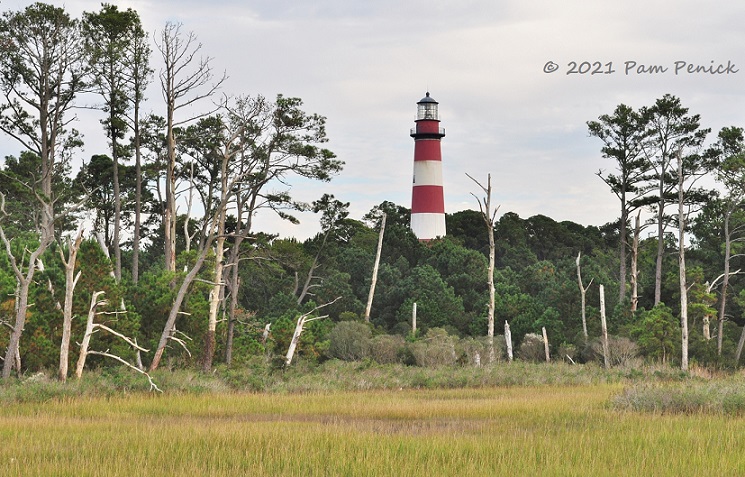
Completed in 1867, the lighthouse stands 142 feet high and remains operational today.
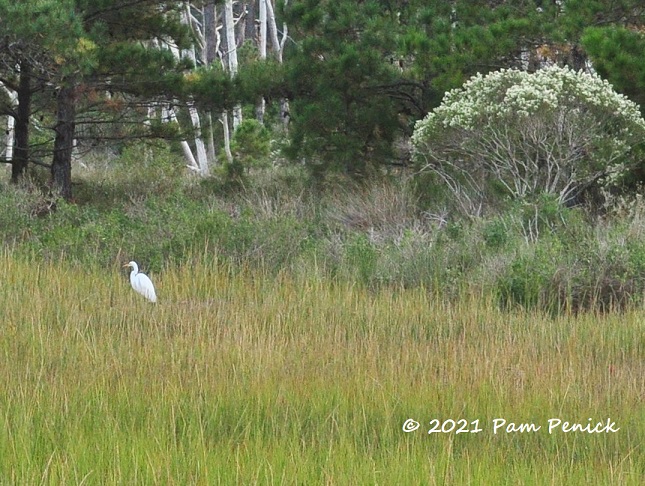
White bird, white trunks, white flowers
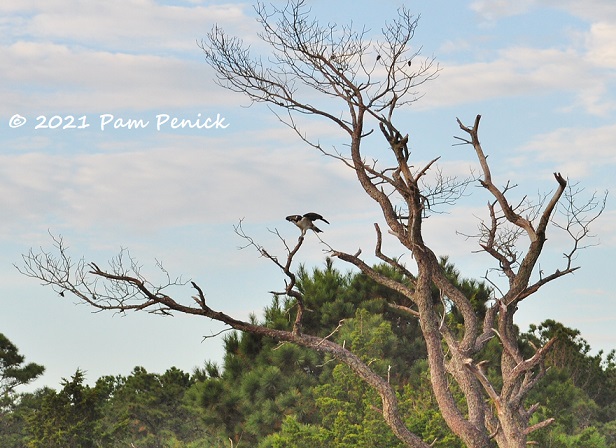
Another raptor spotted, preparing to take off
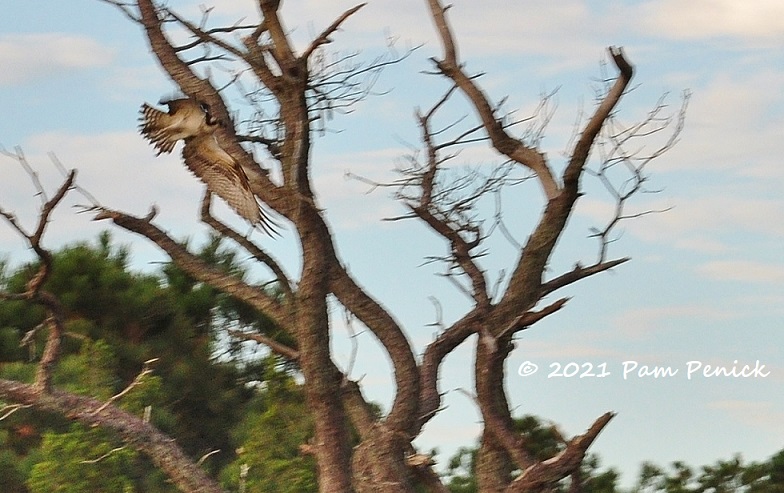
There she goes! Any birders able to identify it from a blurry photo? Update: It may be an osprey. Thanks for the ID, Les!
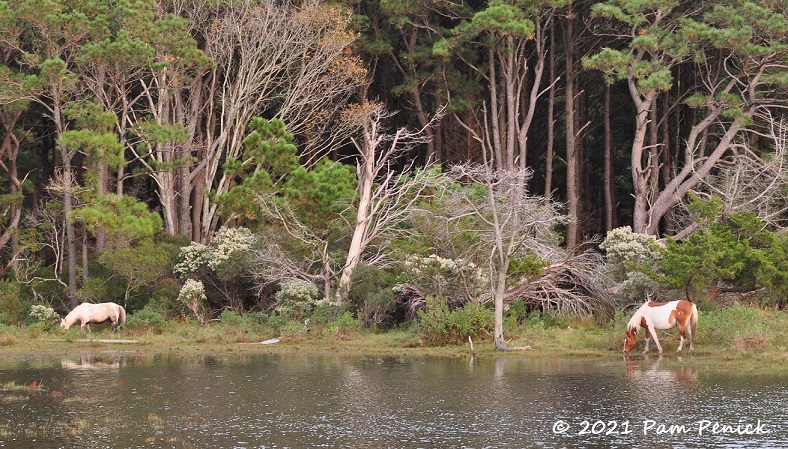
We soon found more ponies grazing at the water’s edge.
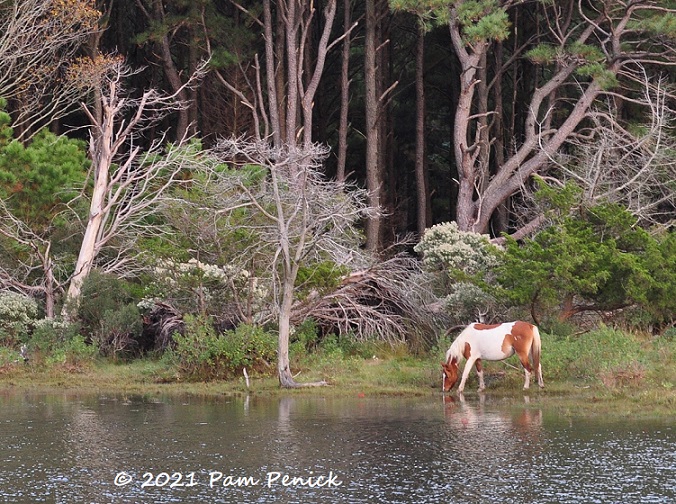
It’s kind of magical to see them living their best wild lives at the edge of forest and sea.
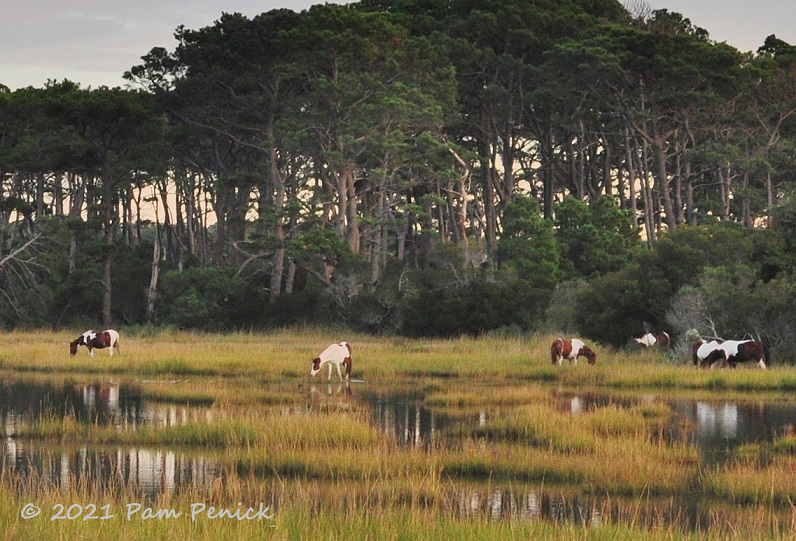
As the sun sank low, we found the motherlode of ponies — a brown-and-white gang grazing in golden marsh grass, the towering pines behind them reflected in the water.
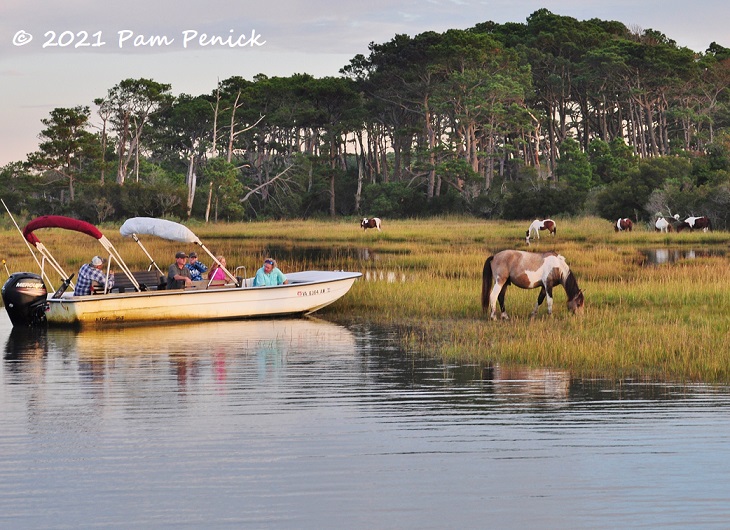
Another small boat was astonishingly close to the stallion, who paid them no mind. Our two boats floated silently, and we all just sat and watched these beautiful animals.
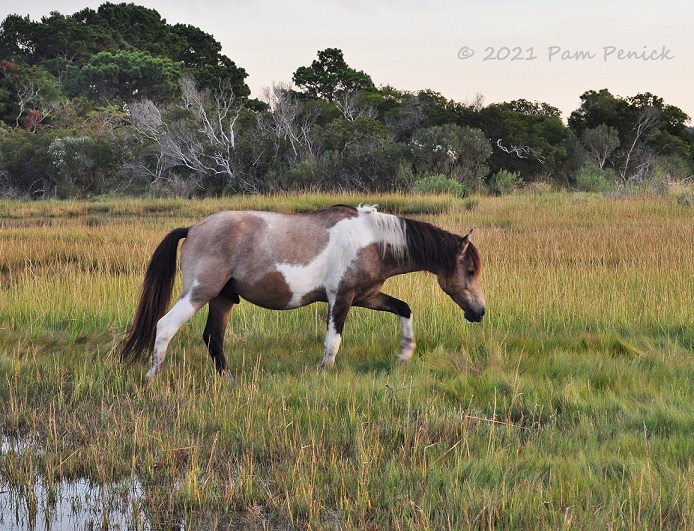
Eventually the stallion ambled across the brackish meadow…
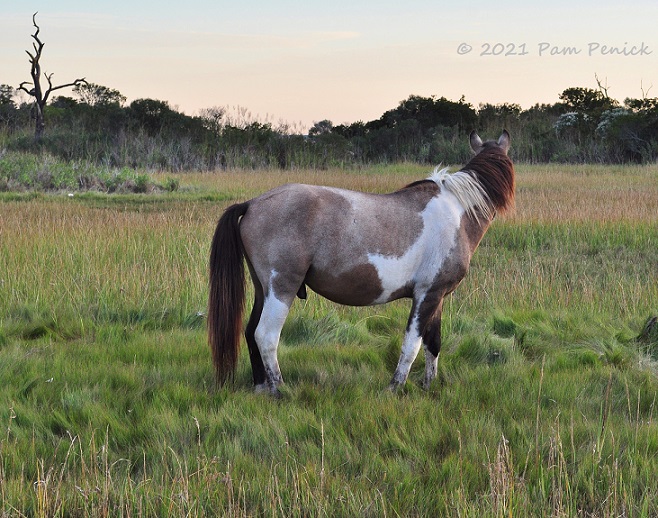
…and gazed into the distance while he peed.
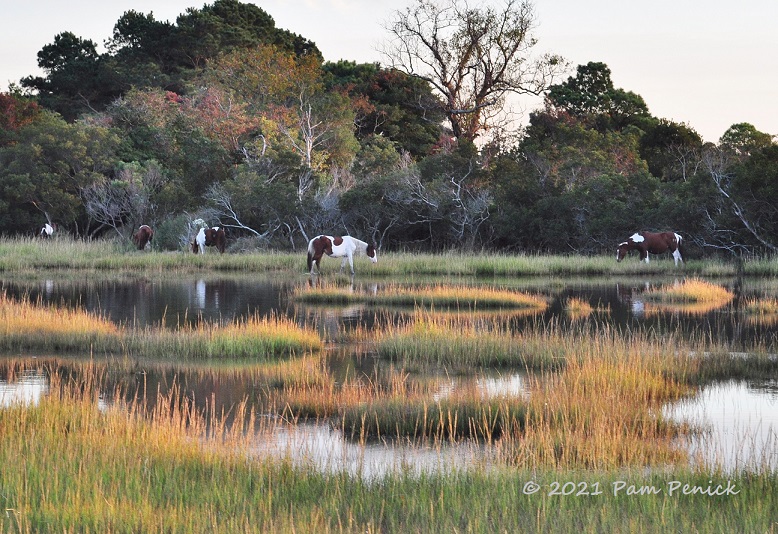
The mares continued to graze as the setting sun turned the marsh grasses orange.
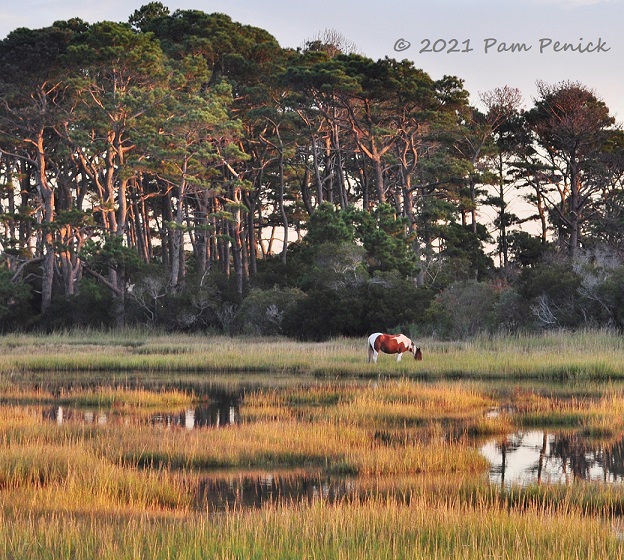
And more orange — and now the pine trunks too
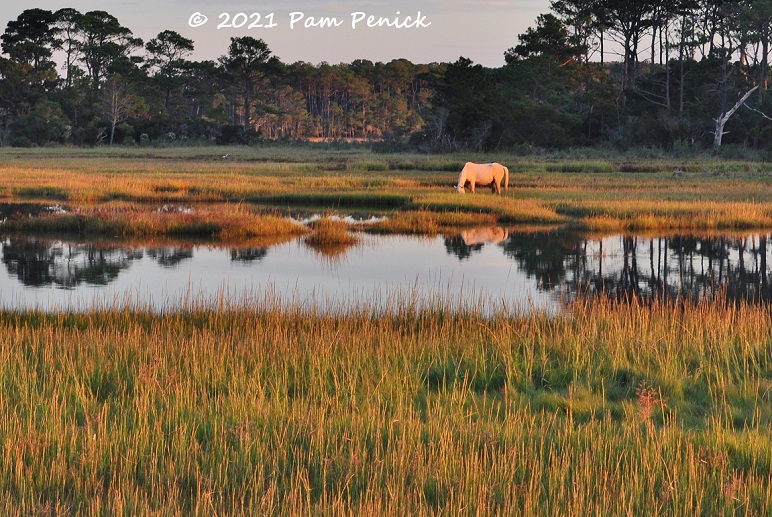
And, impossibly, more orange. The golden hour had arrived.
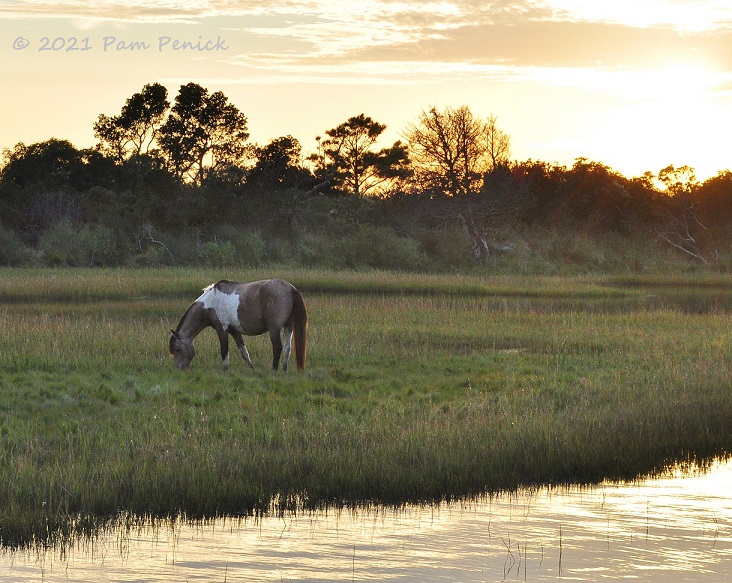
Our captain announced it was time to head back, so I took a farewell photo of the stallion enjoying his sunset graze.
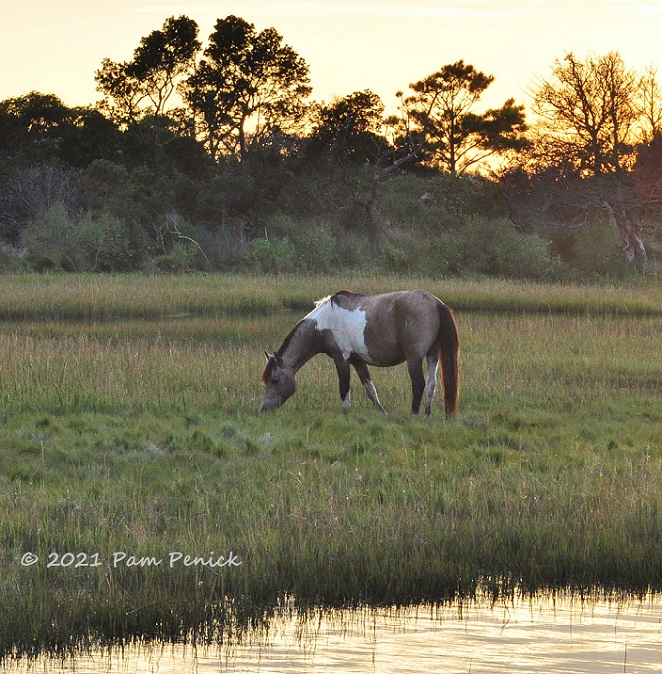
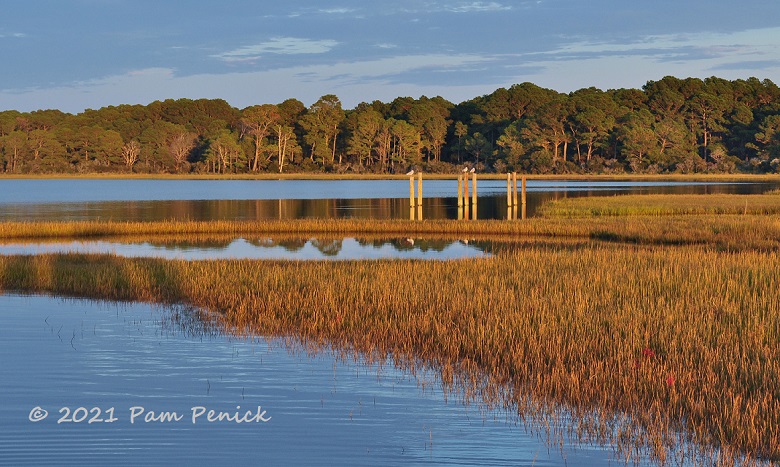
The low light glowed rich and warm on the grasses and piers where sea birds perched.
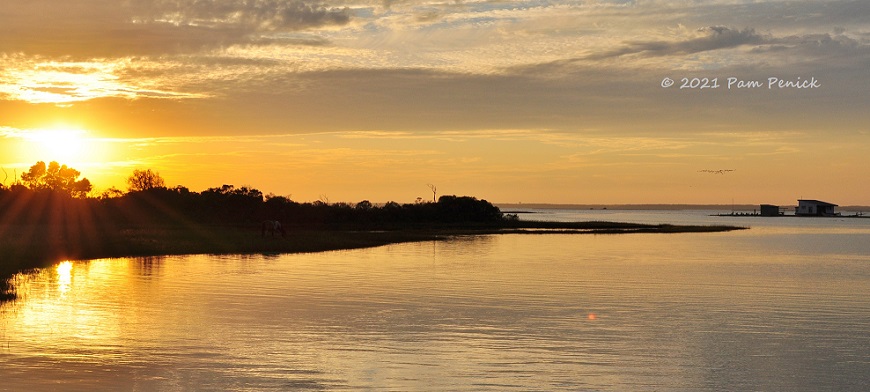
The sky grew tangerine.
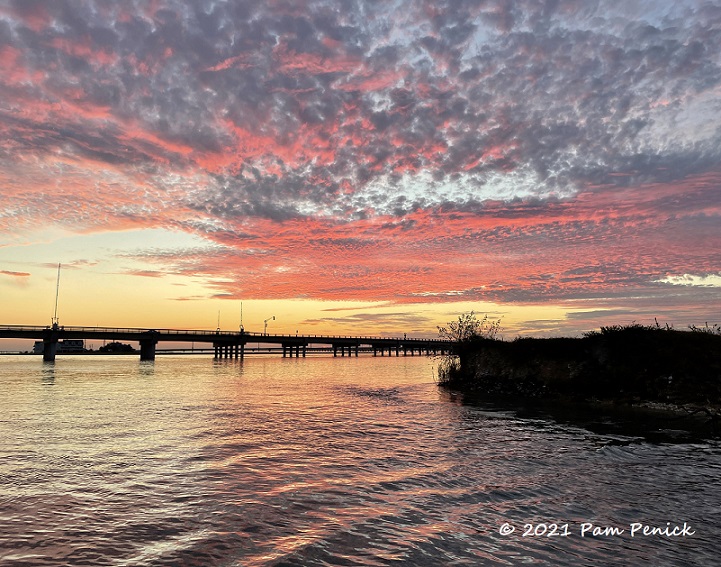
And just when we thought we’d seen the best of it, the clouds went raspberry and lavender. What a beautiful place.
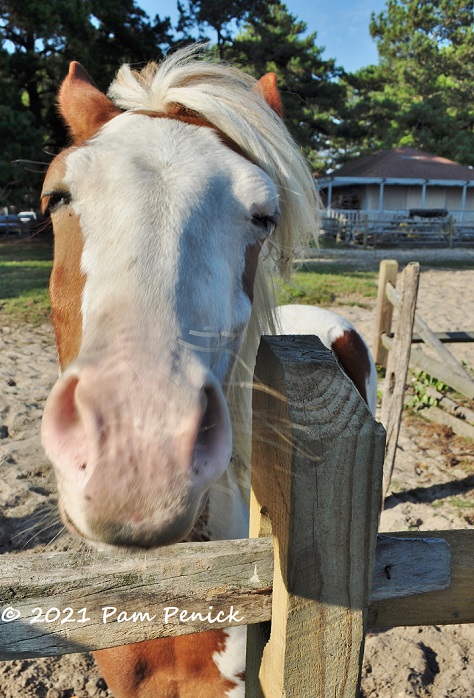
A small herd of Chincoteague ponies live in a large corral beside the Refuge Inn, where I stayed. Some showed a funny-faced eagerness for treats.
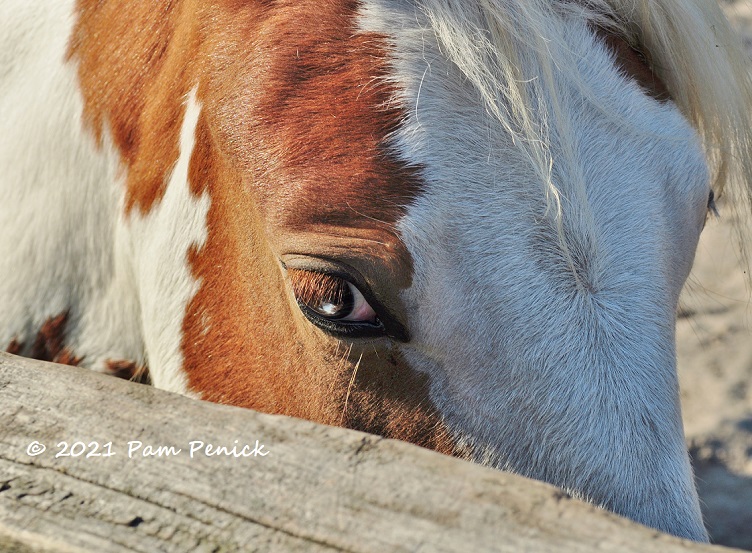
But they could also be a little shy…
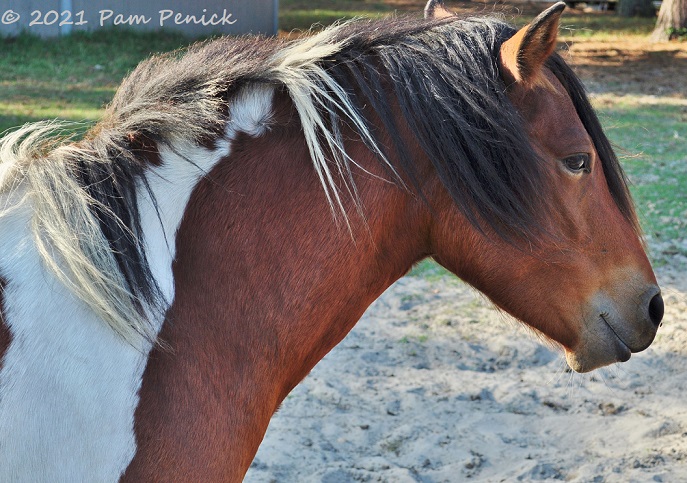
…or standoffish if no treats were forthcoming.
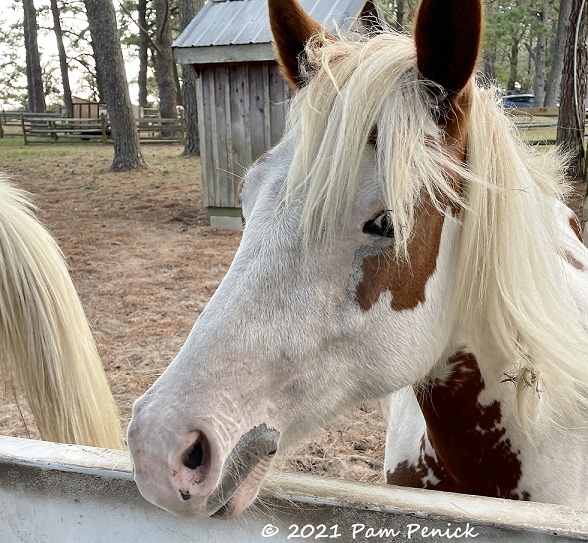
Ever hopeful
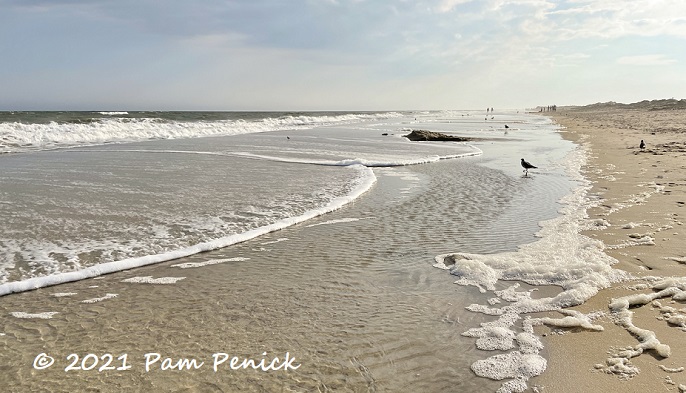
The next day I drove across the channel to Assateague, parked near the beach, and walked along the strand. It was chilly, but a few brave souls were swimming in the surf.
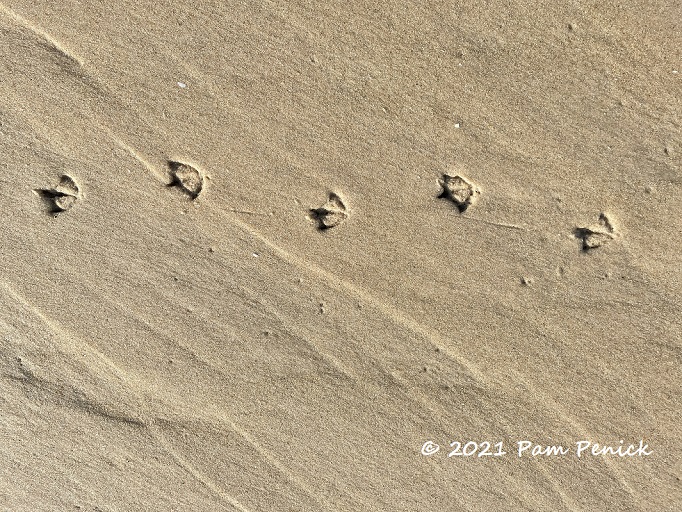
Signs of other beach residents
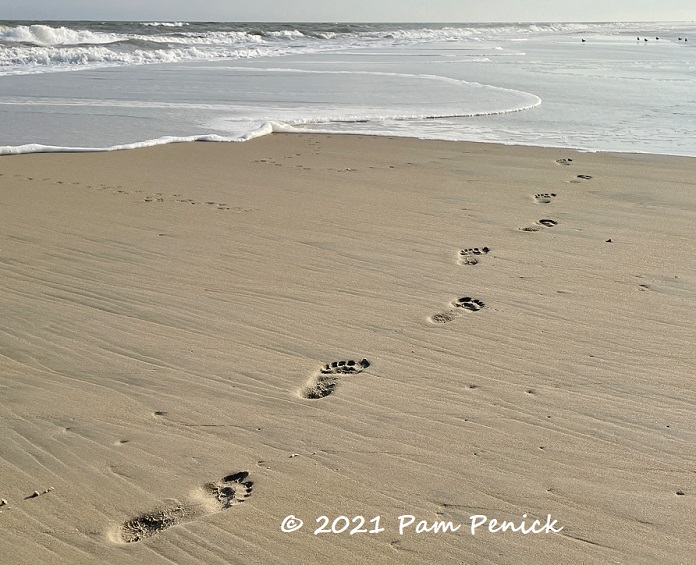
And with that, my Atlantic Coast traverse was over. I flew home from Norfolk’s airport the next day with sand in my shoes, a camera containing thousands of photos, and memories of beautiful places to treasure.
This concludes my East Coast road trip recap. For a look back at my visit to Delaware Botanic Gardens, including the diaphanous Piet Oudolf Meadow, click here. Links to my other garden and nature visits can be found at the end of each post in the series.
__________________________
Digging Deeper
Need design help with your yard? Hire me as your personal garden coach! Maybe you need replacement plant ideas after the big freeze. Or maybe your landscaping has grown tired, and you want fresh curb appeal. Or perhaps you’re ready to get rid of some lawn and create a pollinator garden, bird habitat, or hangout space for you and your friends. I’m here to help! Contact me to let me know what’s going on, and let’s figure it out together. My range is Austin and suburbs within a 25-min. drive of NW Austin, but I’m flexible and can travel farther with a surcharge, so let me know where you are. Weekday morning appts. only.
Come learn about gardening and design at Garden Spark! I organize in-person talks by inspiring designers, landscape architects, authors, and gardeners a few times a year in Austin. These are limited-attendance events that sell out quickly, so join the Garden Spark email list to be notified in advance; simply click this link and ask to be added. Season 8 kicks off in fall 2024. Stay tuned for more info!
All material © 2025 by Pam Penick for Digging. Unauthorized reproduction prohibited.


Gorgeous photos Pam!
Thanks, Loree!
I lived in Maryland for years as a teenager to young adult, and I succumbed to the romance of Assateague and Chincoteague island pony lore.You took some beautiful pictures, Pam. It’s a stunning setting and you did it justice.
It IS a romantic place, Jane. Thanks for your kind comment.
This place is home to several generations of memories for me and my family, and you depicted it so beautifully. BTW, the unidentified bird looks like an osprey. Also, you should have stopped by Norfolk Botanical Garden before getting on the plane. There is a walking path between it and the airport. I would have given you a private tour.
Thanks, Les, and for the bird ID too. It pained me to drive by Norfolk Botanical Garden without stopping on my way to the airport. But there was just no way. My time was up, and I had a plane to catch. It would have been grand to meet you after all these years. Next time!
Oh, magnificent; I love those wide sweeping marsh views, and so much wildlife. A special and peaceful way to end your road trip (although a tour of the botanical garden with Les could have been a real treat).
That would have been the icing on the cake, for sure!